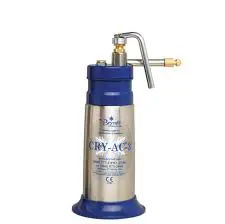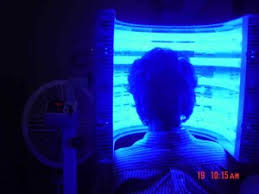Actinic keratosis (AK or Solar Keratosis) is the most common precancerous condition affecting the skin. In nearly all cases, these lesions form on skin that has been damaged by chronic exposure to ultraviolet (UV) rays from the sun and/or indoor tanning beds.
Do I have to treat these lesions?
If left untreated, these precancerous lesions may evolve into an invasive squamous cell carcinoma (SCC) or a squamous cell carcinoma in situ. Therefore, in healthy patients whom are not very elderly, it is advisable to treat these lesions.
What treatments are available?

Here are the most common treatments used today:
Cryosurgery. Individual lesions are frozen using liquid nitrogen using a spray gun or a cotton-tipped applicator. While this is effective, this can leave hypo-pigmented (lighter) spots at the treated area or, less commonly, hyper-pigmented (darker) spots. If dark spots result you should inform your doctor immediately as this can be treated using creams. Sun avoidance after treatment will reduce the risk of darkening greatly.

5-Fluorouracil cream (5FU) is an effective treatment and has been used for many decades. This topical chemotherapy drug destroys the atypical cells. If used alone, redness and scabbing is common and not pleasant. For this reason, this cream can be used with another cream that is similar to Vitamin D3. By doing so, there is little irritation and less than one week of treatment is usually needed. Dr. Bader prefers this method and likes to treat areas and not individual lesions, as nearly everyone has “subclinical lesions”–damage that is not seen or felt, but is there. Dr. Bader can have this medication compounded at a pharmacy for as little as $35. In most cases, Dr. Bader recommends treating affected areas and not just lesions. By doing so, one will have less actinic keratosis and a lower risk of skin cancer in the treated area for many years.
Imiquimod is a cream that revs up the body’s immune system so that one’s own body will recognize the atypical cells and destroy the atypical cells. This results in scabbing and crusting during treatment, which can last several weeks. Dr. Bader prefers this treatment in patients are prone to squamous cell carcinoma in situ and superficial basal cell carcinoma, as this cream is often effective against those as well. Similar to 5-FU, regions or areas can be treated and not just lesions themselves. This cream was very expensive until recently and can now be purchased for under $30. In most cases, Dr. Bader recommends treating affected areas and not just lesions. By doing so, one will have less actinic keratosis and a lower risk of skin cancer in the treated area for many years.

Photodynamic Therapy (PDT) is a newer treatment. Patient will have a medicine applied to the lesions or region where there is sun damage. After waiting an hour, they will go under a blue light (literally a light that is blue) for approximately 16 minutes. There is slight to moderate burning during the light, which activates the medication. Some mild crusting may occur over the next few days.
